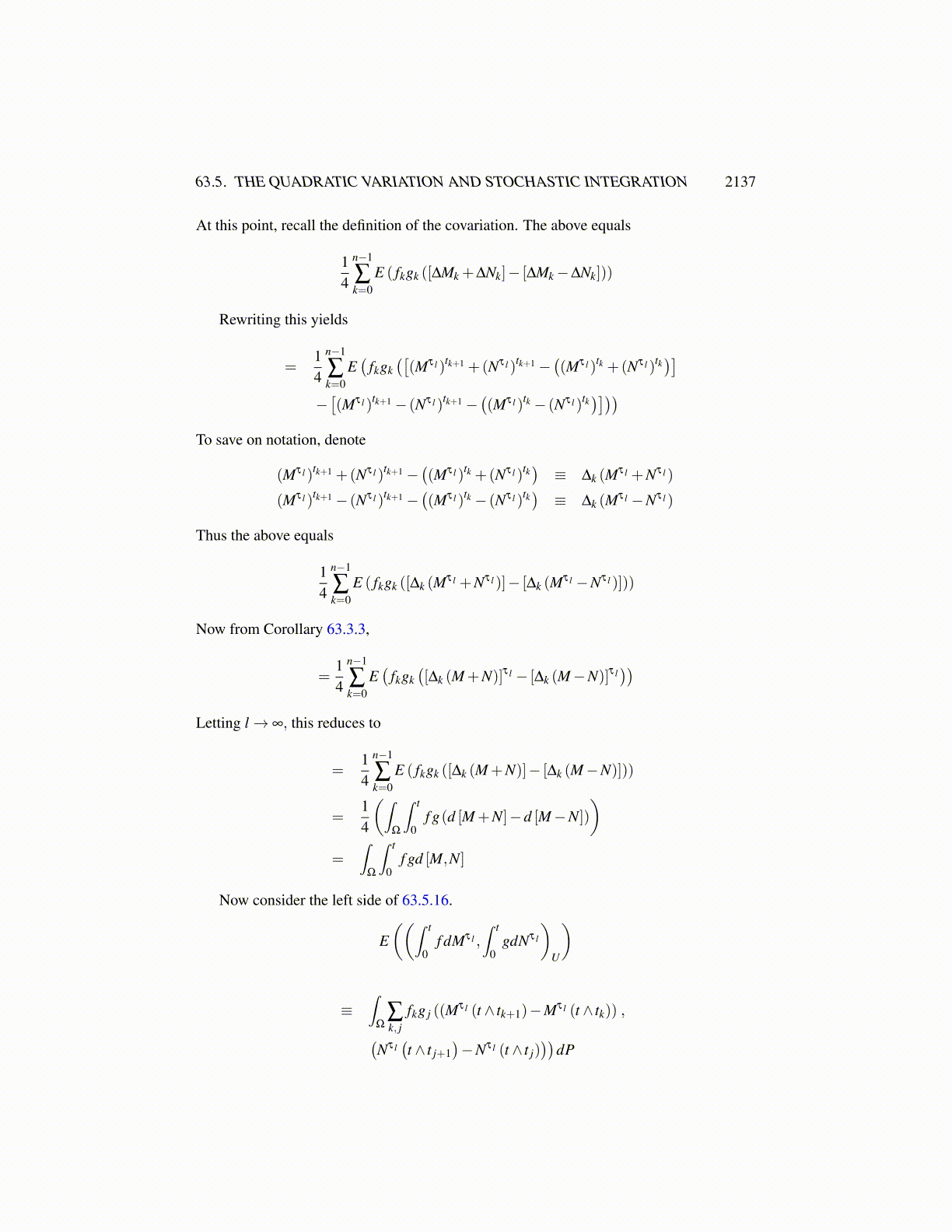
63.5. THE QUADRATIC VARIATION AND STOCHASTIC INTEGRATION 2137
63.5 The Quadratic Variation And Stochastic Integra-tion
Let Ft be a normal filtration and let {M (t)} be a continuous local martingale adapted toFt having values in U a separable real Hilbert space.
Definition 63.5.1 Let Ft be a normal filtration and let
f (t)≡n−1
∑k=0
fkX(tk,tk+1] (t)
where {tk}nk=0 is a partition of [0,T ] and each fk is Ftk measurable, fkM∗ ∈ L2 (Ω) where
M∗ (ω)≡ supt∈[0,T ]
||M (t)(ω)||
Such a function is called an elementary function. Also let {M (t)} be a local martingaleadapted to Ft which has values in a separable real Hilbert space U such that M (0) = 0.For such an elementary real valued function define
∫ t
0f dM ≡
n−1
∑k=0
fk (M (t ∧ tk+1)−M (t ∧ tk)) .
Then with this definition, here is a wonderful lemma.
Lemma 63.5.2 For f an elementary function as above,{∫ t
0 f dM}
is a continuous localmartingale and
E
(∣∣∣∣∣∣∣∣∫ t
0f dM
∣∣∣∣∣∣∣∣2U
)=∫
Ω
∫ t
0f (s)2 d [M] (s)dP. (63.5.13)
If N is another continuous local martingale adapted to Ft and both f ,g are elementaryfunctions such that for each k,
fkM∗,gkN∗ ∈ L2 (Ω) ,
then
E((∫ t
0f dM,
∫ t
0gdN
)U
)=∫
Ω
∫ t
0f gd [M,N] (63.5.14)
and both sides make sense.
Proof: Let {τ l} be a localizing sequence for M such that Mτ l is a bounded martingale.Then from the definition, for each ω∫ t
0f dM = lim
l→∞
∫ t
0f dMτ l = lim
l→∞
(∫ t
0f dM
)τ l